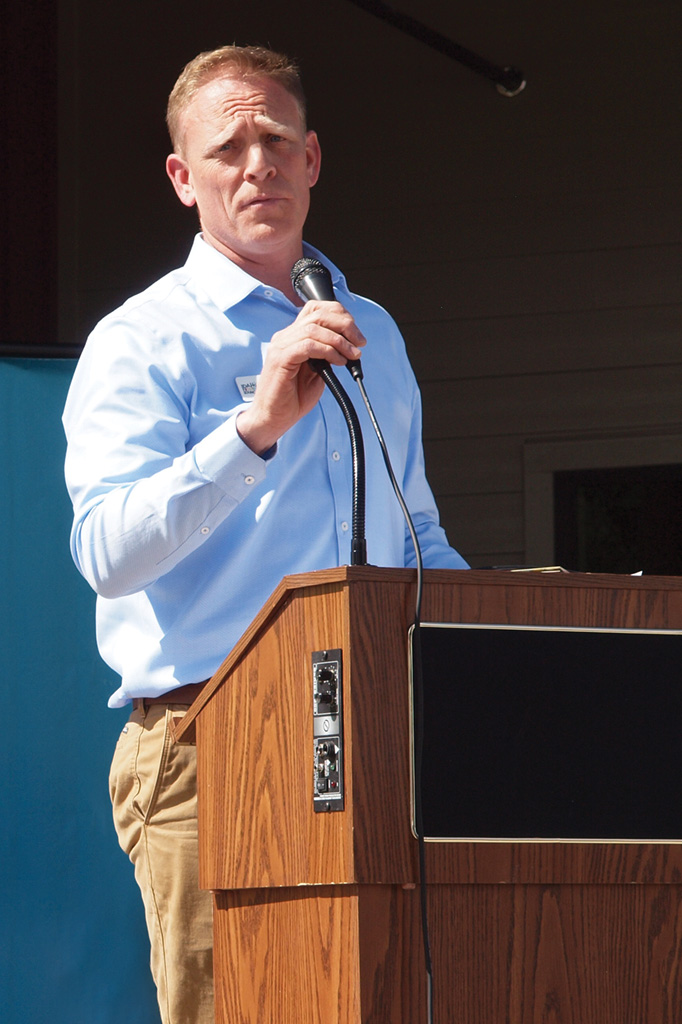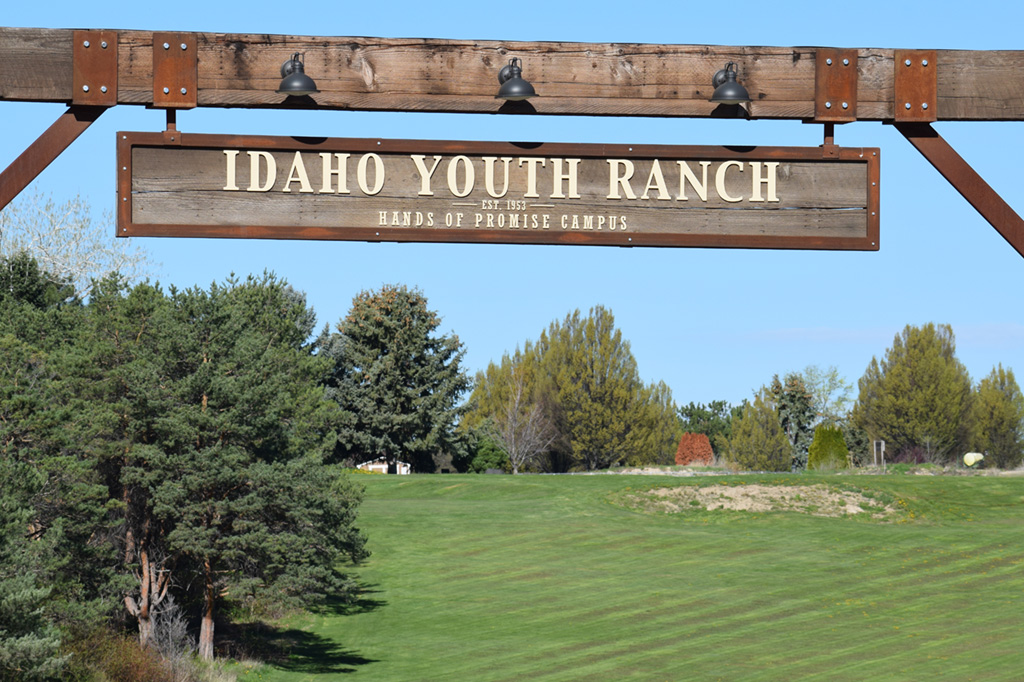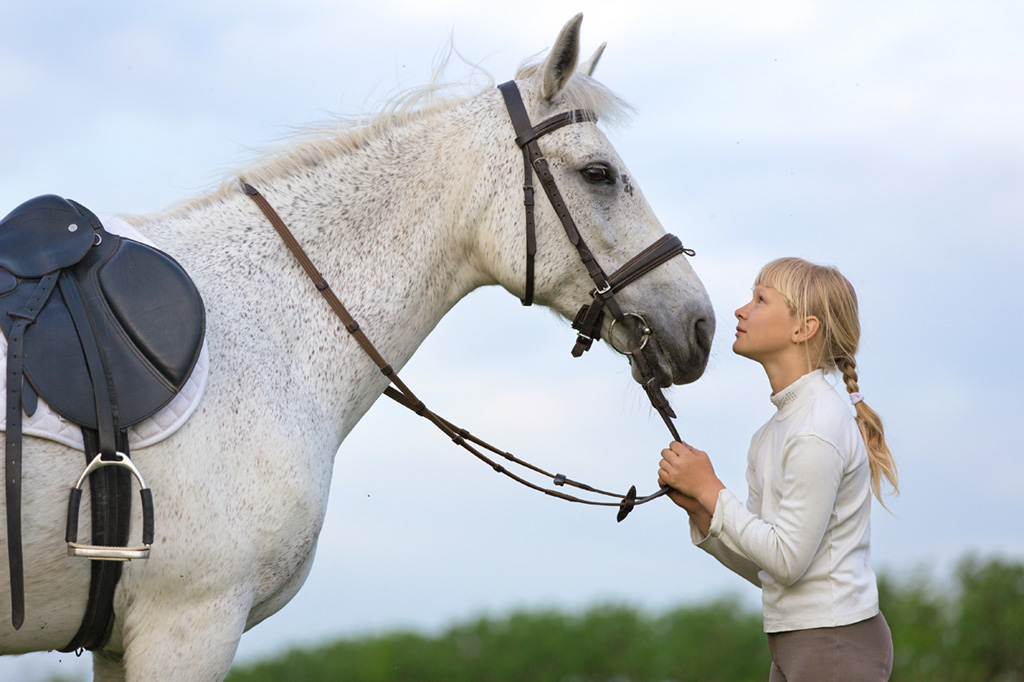About 35 miles west of downtown Boise, at the sprawling 258-acre Hands of Promise Ranch operated by the Idaho Youth Ranch, troubled kids who suffer from emotional and physical childhood trauma and abuse are partnering with horses and therapists to meet head on their lingering emotional scars.
Equine assisted psychotherapy is just one of the many unique therapy programs used by the Idaho Youth Ranch to help kids overcome issues of anger, depression, PTSD, anxiety and the other effects of adverse childhood experiences.
Horses, Therapists, and Kids
In equine therapy, kids work with a horse on various activities as a way to develop emotional strength, trust, and communication skills. For example a youth might be asked to coax the 2,000-pound animal across the pasture without touching it.
“Not being able to have contact with the horse removes a lot of options, but it also forces thought and communication,” said Scott Curtis, CEO of the Idaho Youth Ranch. “Regardless of what happens, that interaction then becomes the basis for therapeutic conversation with their counselor who is with them the whole time. The conversation might focus on what the horse did when the youth stomped his feet, or raised his voice, and how that might relate to the way the youth is interacting with other people in his or her life.
“Kids who have been through the trauma of abuse or neglect often protect themselves by shutting out people who try to reach them, such as counselors and therapists,” Curtis noted. “Horses interact with the youth differently; they don’t judge, and they communicate without words or harshness.”
The foundation for this cutting edge horse-centered therapy program was laid more than 65 years ago, in 1953, when Reverend James Crowe and his wife Ruby Carey Crowe obtained land outside of Rupert, Idaho, and built a ranch for troubled boys to spend a few months living there, working, caring for horses and learning ways to focus their negative energies into something more productive. Back then, it was not called equine therapy, but simply “taking care of your horse.” But the mission was the same.
For now, equine therapy is provided on an outpatient basis. However, future plans include building a long-term residential facility on the ranch where 40 children—20 boys and 20 girls—will live in residency for up to nine months. It’s projected to open in 2021.

Scott Curtis, CEO of Idaho Youth Ranch. Photo: Courtesy Idaho Youth Ranch.
New Leadership
Curtis, who joined the Idaho Youth Ranch in January, said what drew him to the job was its mission, which is to serve the most vulnerable and marginal kids and families in the state, a theme that has been consistent in his work life. Before coming to the Idaho Youth Ranch, Curtis spent 24 years with the YMCA and then two years in Chile serving underprivileged populations. He has also worked as a social worker in the Boise School District.
The Mission
Many Idahoans know the name of Idaho Youth Ranch, but few know the diverse ways in which the 65-year-old organization helps youth and teens overcome trauma from negative childhood experiences.
For homeless or runaway kids, or victims of abuse and neglect, the Idaho Youth Ranch operates Hays House in Boise, a 24-hour place where adolescents between the ages of 10 and 18 can find a safe and supportive temporary place to stay, as well as receive counseling, education and GED instruction and testing.
The Idaho Youth Ranch also operates a program called YouthWorks!, which gives teenagers on-the-job training at Idaho Youth Ranch stores and helps them develop work skills to be successful at finding and keeping employment.
Helping the Traumatized
“Idaho is in the top five in the nation for childhood trauma,” Curtis said. “You wouldn’t think it because Idaho is a wonderful state. You think about our middle class, our rural focus, and you don’t consider childhood trauma being more significant here than it is in most places in the United States, but it is.”
In 2018, the Idaho Youth Ranch served 1,098 kids and their families, services that included job trainings, outpatient therapy, residential programs, adoptions, and family therapies. This was a significant increase over the 626 clients in 2017. They also invested in their thrift stores.
“The needs of our youth have changed so much in 65 years, and the types of challenges and trauma our youth are facing are different than young people in the 1950s were struggling with,” Curtis said. “Research has found that what happens to children in their early years affects them their whole lives.”

Photo: Courtesy Idaho Youth Ranch
Donations and Thrift Stores
Idaho Youth Ranch’s thrift stores around the state and its massive distribution center are perhaps familiar to many. Each year, several million pounds of donations are dropped off at the stores and at the main distribution center in Boise. Clothing, electronics, artwork, furniture, sporting equipment, bicycles, yard equipment, books and movies, vehicles and more is taken in, sorted, catalogued, and sent out to the 24 Idaho Youth Ranch thrift stores that dot the state. Income from the sales of these items helps fund various programs.
“The thrift side of the organization is critical to providing services for our programs, but it’s also amazing the amount of mission work that’s going on inside the stores and distribution centers, too,” Curtis said. “We have a full time staff totaling 425, and they all have medical benefits, and full time jobs. And you’ll notice we employ a large number of refugees and single parents. So, aligned with our mission of working with vulnerable youth there is a lot of that same work happening here.”
Inside the enormous distribution center, a forklift operator slides his metal blades underneath a wrapped and ready 1200-pound bulk bundle of clothing to load on his truck. He has purchased the huge bundles, which are randomly put together and packaged by the pound. These are clothes not sellable in the stores. The bulk clothing and materials may be sent to South America, Asia, or Africa where they are sold for clothing, rags, or whatever is needed.
Old wiring is sold for its copper. Shoes that don’t sell are purchased for their rubber bottoms, which are then recycled to create the rubberized base for running tracks and the pellets under the Boise State University Bronco Field. Curtis said the operation also has an important environmental impact: In just the past nine months, the selling and recycling of these donations has kept nearly 6 million pounds of materials from being deposited in the landfill.
Future Goals
An important piece of the future mission is to get the long-term residential treatment facility up and operating at the Hands of Promise Ranch near Middleton, according to Curtis.
“A couple years ago the decision was made to phase in the ranch. Instead of starting with the residential program there we decided to build the infrastructure and the outdoor and indoor riding arenas, because equine therapy has really become a signature program of ours,” Curtis said. “Now, we’re moving into the next phase of capital campaigning and construction of the residential treatment center. As we continue to grow and work with the result of this trauma epidemic, we also have to work with everyone across the state to build awareness of Idaho’s high prevalence of childhood trauma and work together to end it. The Idaho Youth Ranch is about working with those youth who have fallen through all of the safety nets. There’s nobody left to catch them, and that is why we are here.”

